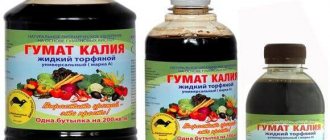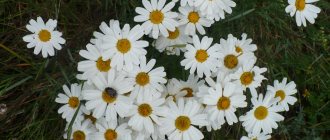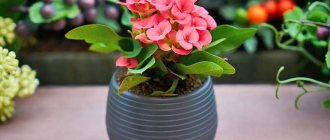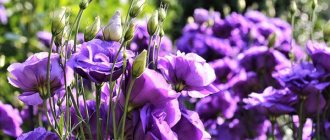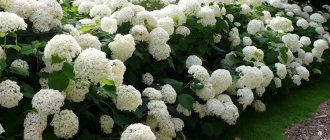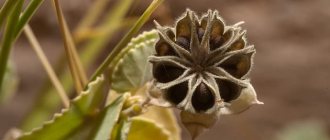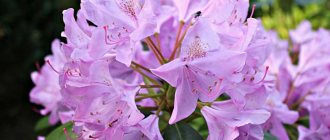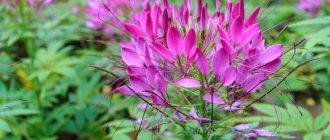Yoshta
0
Source:
Crossing such plant species as currants (johannisbeere) and gooseberries (stachelbeere) produced the yoshtu berry with fruits close to black in color, the size of a cherry, with a sweet and sour, slightly astringent taste, pleasantly reminiscent of currants. Michurin also dreamed of creating currants the size of gooseberries, but not prickly. He managed to develop the “Black Moor” gooseberry, which is dark purple in color. By 1939, in Berlin, Paul Lorenz was also breeding similar hybrids. Due to the war, these works were stopped. It was only in 1970 that Rudolf Bauer managed to get the ideal plant. Now there are two varieties of yoshta: “Black” (brown-burgundy color) and “Red” (faded red color). During the season, 7-10 kg of berries are obtained from the yoshta bush. They are used in homemade preparations, desserts, and for flavoring soda. Yoshta is good for gastrointestinal diseases, for removing heavy metals and radioactive substances from the body, and improving blood circulation.
×
0
Source:
Green revolution
The fertilizers and irrigation products developed during this process were used in many developing countries. Each crop requires optimal growing conditions to obtain high yields. Fertilization, mechanization and irrigation are essential components of the Green Revolution. Due to the distribution of credits, only relatively wealthy landowners were able to grow new plant (cereal) hybrids. In many regions, the Green Revolution has accelerated the concentration of land in the hands of the wealthiest few owners. This redistribution of property does not necessarily provide jobs or food for the majority of the population in these regions.
Yellow watermelon
0
Source:
Yellow watermelons, perhaps, have ceased to be completely a curiosity - they can often be seen in stores. On the outside, they are the usual striped watermelon, but at the same time bright yellow on the inside. Another feature is the very small number of seeds. This watermelon is the result of crossing a wild one (yellow inside, but completely tasteless) with a cultivated watermelon. The result was juicy and tender, but less sweet than red. They are grown in Spain (round varieties) and Thailand (oval). But in Russia, breeder Sokolov from Astrakhan was able to grow a rather sweet type of yellow watermelon. This variety has a very sweet taste with some exotic notes, similar to the taste of mango or lemon, or pumpkin.
0
Source:
Inbreeding breeding
In the center is heterotic corn, on the left and right are the parental individuals.
This is called inbreeding. Inbreeding occurs when cross-pollinated plants self-pollinate. For inbreeding, plants are selected whose hybrids provide the maximum effect of heterosis. Such selected plants undergo forced self-pollination for a number of years. As a result of inbreeding, many recessive unfavorable genes become homozygous, which leads to a decrease in plant viability and to their “depression.” Then the resulting lines are crossed with each other, hybrid seeds are formed, giving a heterotic generation.
Heterosis
(“hybrid vigor”) is a phenomenon in which hybrids are superior to their parent forms in a number of traits and properties. Heterosis is characteristic of first-generation hybrids; the first hybrid generation gives an increase in yield of up to 30%. In subsequent generations, its effect weakens and disappears. The heterosis effect is explained by two main hypotheses. The dominance hypothesis suggests that the effect of heterosis depends on the number of dominant genes in the homozygous or heterozygous state. The more genes in a dominant state in a genotype, the greater the effect of heterosis.
| R | AAbbCCdd | × | aaBBccDD |
| F 1 | AaBbCcDd |
The overdominance hypothesis explains the phenomenon of heterosis by the overdominance effect. Overdominance
- a type of interaction of allelic genes in which heterozygotes are superior in their characteristics (in weight and productivity) to the corresponding homozygotes. Starting from the second generation, heterosis fades, as some genes become homozygous.
Diploid plants (2 n
= 16) and tetraploid (2
n
= 32) buckwheat.
Aa × Aa AA
2Aa aa
Cross-pollination of self-pollinators
makes it possible to combine the properties of different varieties. For example, when breeding wheat, proceed as follows. The anthers of the flowers of a plant of one variety are removed, a plant of another variety is placed next to it in a vessel with water, and the plants of the two varieties are covered with a common insulator. As a result, hybrid seeds are obtained that combine the characteristics of different varieties desired by the breeder.
Method for obtaining polyploids.
Polyploid plants have a greater mass of vegetative organs and larger fruits and seeds. Many crops are natural polyploids: wheat, potatoes; varieties of polyploid buckwheat and sugar beets have been bred.
Species in which the same genome is multiplied multiple times are called autopolyploids
. The classic way to obtain polyploids is to treat seedlings with colchicine. This substance blocks the formation of spindle microtubules during mitosis, the set of chromosomes in cells doubles, and the cells become tetraploid.
Purple potatoes
0
Source:
Potatoes with pink, yellow or purple skins no longer surprise anyone. But scientists from Colorado State University managed to get potatoes with a purple color inside. The variety is based on Andean highland potatoes, and the color is due to the high content of anthocyanins. These substances are the strongest antioxidants, the properties of which are preserved even after cooking. These purple potatoes with a familiar taste look great mashed, indescribably rich in color, baked, and of course fries.
0
Source:
Triticale
Conduct intervarietal crossing of tomatoes
Traditional breeding methods can sometimes produce surprising results. For example, the hybrid of wheat (Triticum) and rye (Secale) triticale (scientific name Triticosecale) is becoming increasingly important in many areas and appears to be very promising. It was created by doubling the number of chromosomes in a sterile wheat-rye hybrid in the mid-1950s. J. O'Mara at the University of St. Iowa using colchicine, a substance that interferes with the formation of the cell plate. Triticale combines the high yield of wheat with the unpretentiousness of rye. The hybrid is relatively resistant to linear rust, a fungal disease that is one of the main wheat yields. Further crossings and selection produced improved triticale lines for specific areas. In the mid-1980s. This crop, due to its high yield, resistance to climatic factors and excellent straw remaining after harvest, quickly gained popularity in France, the largest grain producer within the EEC. The role of triticale in the human diet is rapidly growing.
Romanesco cabbage
0
Source:
The ethereal appearance of this close relative of broccoli and cauliflower perfectly illustrates the concept of “fractal.” Its soft green inflorescences are cone-shaped and arranged in a spiral on the head of cabbage. This cabbage comes from Italy, it has been widely sold for about 10 years, and its popularization was facilitated by Dutch breeders, who slightly improved the vegetable, known to Italian housewives since the 16th century. Romanesco has little fiber and a lot of useful substances, making it easily digestible. Interestingly, when preparing this cabbage, there is no characteristic cabbage smell, which not everyone likes, especially children. In addition, the exotic appearance of the space vegetable makes you want to try it. Romanesco is prepared like regular broccoli - boiled, stewed, added to pasta and salads.
0
Source:
Individual selection
Individual selection is used in the selection of self-pollinating plants (wheat, barley, peas). In this case, the offspring retains the characteristics of the parental form, is homozygous and is called a pure line. A pure line is the offspring of one homozygous self-pollinated individual. Since mutation processes constantly occur, there are practically no absolutely homozygous individuals in nature. Mutations are most often recessive. They come under the control of natural and artificial selection only when they become homozygous.
Pluot and Aprium
0
Source:
By crossing plant species such as plums and apricots, two hybrids were obtained: Pluot, which looks more like a plum, and Aprium, which looks more like an apricot. Both hybrids are named after the first syllables of the English names of the parent species. Externally, pluot fruits are colored pink, green, burgundy or purple, while the inside varies from white to deep plum. These hybrids were bred at Dave Wilson Nursery in 1989. Now in the world there are already two varieties of aprium, eleven varieties of pluot, one nectaplama (a hybrid of nectarine and plum), and one pichplama (a hybrid of peach and plum). Plouts are used for making juice, desserts, homemade preparations and wine. This fruit tastes much sweeter than both plum and apricot.
0
Source:
Crossbreeding technology
Crossing technology consists of the artificial or natural transfer of pollen from a plant of one variety or species to another, carried out under careful control.
During this period, it is important to isolate the flowers to prevent the entry of foreign pollen.
Crossing algorithm:
- Choose two plants of different varieties or species.
- On the mother plant, select the most conveniently located flowers.
- Carefully open the unopened buds (one day before blooming).
- Using tweezers, carefully remove all stamens with pollen.
- Wrap flowers with removed stamens in white thin material to avoid unplanned pollination.
- The day before removing the stamens from one plant from the second (paternal) buds about to open, collect pollen in a glass jar.
- Cover the jar with gauze or a light transparent cloth and place it in a dry place.
The day after the stamens are removed from the mother plant, fertilization is carried out:
- The best time is the first half of the day before twelve o'clock.
- Shake the jar of pollen.
- The pollen that has settled on the walls of the jar is carefully applied to the stigma of the mother plant with a cotton swab or other improvised means (you can even use your finger).
- Cover the fertilized flower again with a light, thin cloth or gauze.
- Repeat fertilization for 3 days.
Fertilized flowers must be covered for the entire growth period until the fruit ripens. It is recommended to remove excess flowers. After harvesting ripe fruits, they must be stored for from several weeks to several months, depending on the time of ripening and the shelf life of the crop.
Seeds of stone fruit plants are sown immediately on the beds; pome seeds of summer ripening, after three days of drying, are sown in the sand on the beds in the fall. The seeds of plants that ripen in the fall are collected when the fruits begin to deteriorate, but no later than April. After collecting and drying, they are sown in prepared containers.
Broccolini
0
Source:
In the cabbage family, as a result of crossing regular broccoli and Chinese broccoli (gailana), a new cabbage was obtained - similar to asparagus on the top with a broccoli head. Broccolini is a little sweet, does not have a sharp cabbage spirit, with a peppery note, delicate in taste, reminiscent of both asparagus and broccoli. It contains many useful substances and is low in calories. In the USA, Brazil, Asian countries, Spain, broccolini is usually used as a side dish. It is served fresh, drizzled with butter or lightly fried in oil.
0
Source:
How to register a new variety?
Nowadays, no one is involved in the registration of domestic varieties at the level of institutes or institutions of this type.
register the variety on some websites or try to do it through the Institute of Biology .
In the first option, registering a variety is free and takes little time. In government agencies, this process can last months and cost some investment.
In addition, you can register your varieties on foreign resources , but this is usually not free. For example, registration for AVSA is paid and this is not an indicator for most flower growers.
If you do register a variety, then it is worth knowing the sequence of this process:
- After obtaining a new variety, it is fixed in at least three generations (when registering with government agencies, the procedure for fixing and checking can be carried out themselves, but in our time this is rare);
- Submitting an application for registration. On most sites, this requires at least two photos of the rosette (large flowering and the entire rosette) and a description of the parameters. All additional data will be requested if necessary. You can come up with a name right away, otherwise the variety will be assigned a number and then not all resources can change it to the name;
- Waiting for the result. After checking the similarity of the new variety to those already registered and the absence of strongly similar variants, the variety is assigned a number and name. The name is chosen either by the breeder himself when submitting an application, or with his permission, a competition is held and the best option is selected.
Nashi
0
Source:
Another result of plant crossings is Nashi. It was obtained from apples and pears in Asia several centuries ago. There it is called Asian, water, sand or Japanese pear. The fruit looks like a round apple, but tastes like a juicy, crisp pear. The color of Nashi ranges from pale green to orange. Unlike regular pears, nashi is harder, so it is better stored and transported. Nashi is quite juicy, so it is best used in salads or solo. The fruit is also good as a snack for wine along with cheese and grapes. Currently, about 10 popular commercial varieties are grown in Australia, the USA, New Zealand, France, Chile and Cyprus.
0
Source:
Features of care after mutation
Sometimes variants occur when a variety that has always bloomed “according to its variety” suddenly blooms with an unknown sport and blooms like this for several flowerings. This process is called mutation, and a flower that has mutated cannot yet be considered a new variety.
To obtain the status of a new variety, it is necessary to consolidate the result of the mutation . This is done in the same way as consolidation of any result of breeding a variety - by the method of propagation. For ordinary varieties with leaves, for chimeras with stepsons.
If rosettes of three generations retain the parameters of a mutated flower, it is recognized as a new variety.
Yuzu
0
Source:
Yuzu (Japanese lemon) is a hybrid of mandarin and ornamental citrus (ichang papeda). The fruit, the size of a tangerine, is green or yellow in color with lumpy skin and has a sour taste and bright aroma. The Japanese have been using it since the 7th century, when Buddhist monks brought this fruit from the mainland to the islands. Yuzu is popular in Chinese and Korean cooking. It has a completely unusual aroma - citrus, with floral shades and notes of pine. Most often used for flavoring, the zest is used as a seasoning. This seasoning is added to meat and fish dishes, miso soup, and noodles. Jams, alcoholic and non-alcoholic drinks, desserts, and syrups are also prepared with zest. The juice is similar to lemon juice (sour and aromatic, but softer) and is the basis of ponzu sauce, and is also used as vinegar. It also has cult significance in Japan. On December 22, the winter solstice, it is customary to take baths with these fruits, which symbolize the sun. Its aroma drives away evil forces and protects against colds. Animals are dipped into the same bath, and then the plants are watered with water.
0
Source:
Selection
This is the science of creating new and improving existing animal breeds, plant varieties, and strains of microorganisms. Selection is based on methods such as hybridization and selection. The theoretical basis of selection is genetics.
To successfully solve the problems facing selection, Academician N.I. Vavilov especially emphasized the importance of studying the varietal, species and generic diversity of crops; studying hereditary variability; the influence of the environment on the development of traits of interest to the breeder; knowledge of the patterns of inheritance of traits during hybridization; features of the selection process for self- or cross-pollinators; artificial selection strategies.
Breeds, varieties, strains are artificially created populations of organisms with hereditarily fixed characteristics: productivity, morphological, physiological characteristics.
Each breed of animal, plant variety, strain of microorganisms is adapted to certain conditions, therefore, in each zone of our country there are specialized variety testing stations and breeding farms for comparing and testing new varieties and breeds.
For successful work, a breeder needs varietal diversity of the source material. At the All-Union Institute of Plant Growing N.I. Vavilov collected a collection of varieties of cultivated plants and their wild ancestors from all over the globe, which is currently being replenished and is the basis for work on the selection of any crop.
The centers of origin of cultivated plants identified by N.I. Vavilov
| Centers of origin | Location | Cultivated plants |
| 1. South Asian tropical | Tropical India, Indochina, Southeast Asian Islands | Rice, sugar cane, citrus fruits, eggplants, etc. (50% cultivated plants) |
| 2. East Asian | Central and Eastern China, Japan, Korea, Taiwan | Soybean, millet, buckwheat, fruit and vegetable crops - plum, cherry, etc. (20% of cultivated plants) |
| 3. South-West Asian | Asia Minor, Central Asia, Iran, Afghanistan, South-West India | Wheat, rye, legumes, flax, hemp, turnips, garlic, grapes, etc. (14% of cultivated plants) |
| 4. Mediterranean | Countries along the Mediterranean Sea | Cabbage, sugar beets, olives, clover (11% of cultivated plants) |
| 5. Abyssinian | Abyssinian Highlands of Africa | Durum wheat, barley, bananas, coffee tree, sorghum |
| 6. Central American | Southern Mexico | Corn, cocoa, pumpkin, tobacco, cotton |
| 7. South American | West coast of South America | Potatoes, pineapple, cinchona |
The richest in terms of the number of cultures are the ancient centers of civilization. It is there that the earliest farming culture took place, and artificial selection and selection of plants have been carried out for a longer period of time.
The classical methods of plant breeding have been and remain hybridization and selection. There are two main forms of artificial selection: mass and individual.
